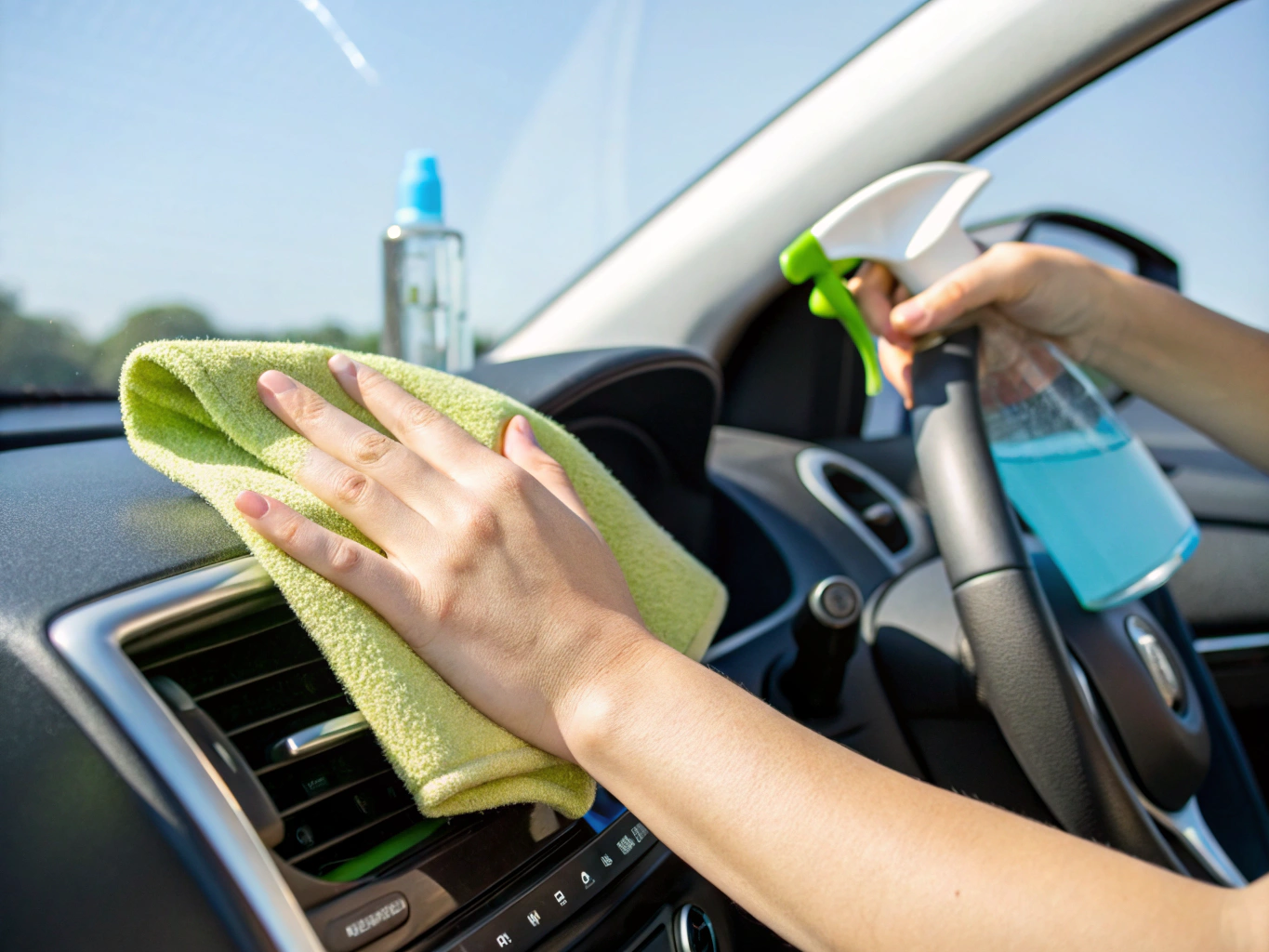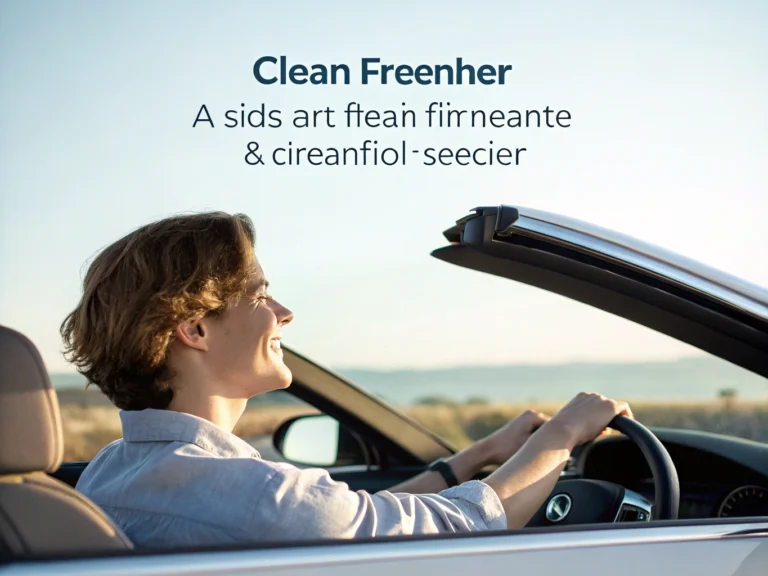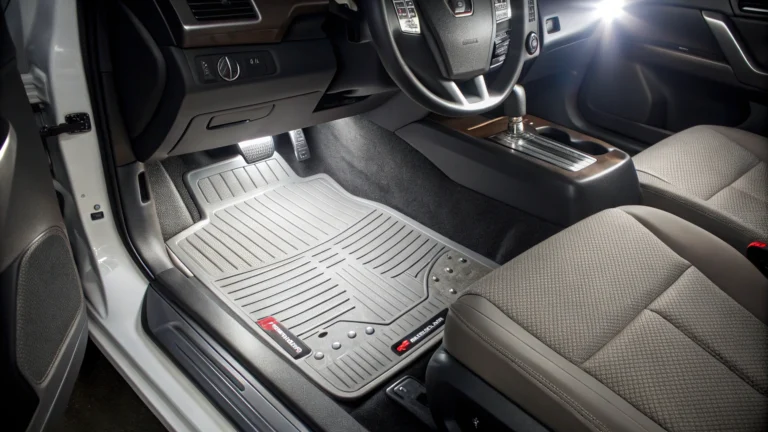Ultimate DIY Eco-Friendly Car Interior Cleaning Guide
Table of Contents
Keeping your car’s interior clean doesn’t have to come at the expense of the environment. Traditional car cleaning products often contain harsh chemicals that can be harmful to both you and the planet. Fortunately, there are numerous eco-friendly alternatives that are just as effective—if not more so—than their chemical-laden counterparts. This comprehensive guide will walk you through everything you need to know about eco-friendly car interior cleaning, from gathering supplies to advanced detailing techniques, all while keeping sustainability at the forefront.
Eco-Friendly Car Interior Cleaning: A DIY Guide
The shift toward environmentally conscious car care isn’t just a trend—it’s a responsible approach to vehicle maintenance that benefits both your health and the ecosystem. Eco-friendly cleaning methods reduce your exposure to toxic chemicals while minimizing environmental pollution. Plus, many natural cleaning solutions are more affordable than commercial products, making this approach budget-friendly as well.
Gathering Your Eco-Friendly Arsenal
Before diving into the cleaning process, you’ll need to assemble the right tools and products. The foundation of eco-friendly car care lies in choosing the right supplies.
- Choosing Non-Toxic Cleaning Products
When selecting cleaning products, look for those with EPA Safer Choice certification or other reputable eco-labels. According to the Environmental Protection Agency, products with these certifications meet strict criteria for environmental safety while maintaining cleaning effectiveness.
Some excellent eco-friendly options include:
- White vinegar: A natural disinfectant and deodorizer
- Baking soda: Perfect for odor elimination and gentle scrubbing
- Castile soap: A plant-based soap that’s effective on multiple surfaces
- Essential oils: For natural fragrance (lavender, tea tree, and lemon work well)
- Microfiber cloths: Reusable and effective without chemicals
Avoid products containing phosphates, phthalates, artificial fragrances, and petroleum-based ingredients, which can be harmful to both you and the environment.
- Essential Tools for Eco-Cleaning
Beyond cleaning solutions, you’ll need:
- Spray bottles for homemade solutions
- Microfiber cloths (different colors for different areas to prevent cross-contamination)
- Soft-bristled brushes for upholstery and tight spaces
- A vacuum with various attachments
- Reusable cotton swabs for vents and small crevices
- Old toothbrushes for detailed cleaning
Step-by-Step Interior Detailing
With your eco-friendly arsenal ready, it’s time to tackle the cleaning process systematically.
Upholstery and Carpet Cleaning
The fabric surfaces in your car trap dirt, spills, and odors, making them one of the most challenging areas to maintain.
- Stain Removal Techniques for Various Fabrics
For fabric seats and carpets:
- Begin by thoroughly vacuuming to remove loose dirt and debris.
- For general cleaning, mix 2 tablespoons of castile soap with 2 cups of warm water.
- Test any solution on an inconspicuous area first.
- For specific stains:
- Coffee/tea: Blot with a mixture of equal parts white vinegar and water
- Grease: Apply baking soda, let sit for 15 minutes, then vacuum and clean with castile soap solution
- Mud: Allow to dry completely, vacuum, then treat with soap solution
- Ink: Dab with rubbing alcohol (one of the few chemicals that’s necessary but relatively low-impact)
For synthetic upholstery, a simple solution of castile soap and water works wonders, while natural fibers may require more gentle handling.
- Odor Elimination and Freshening
Instead of masking odors with artificial fragrances, address the source:
- Sprinkle baking soda liberally on fabric surfaces and carpets.
- Let it sit for at least 30 minutes (overnight for stubborn odors).
- Vacuum thoroughly.
- For a natural air freshener, mix water with a few drops of essential oil in a spray bottle.
For persistent odors, consider placing small containers of baking soda, activated charcoal, or coffee grounds under the seats to absorb unwanted smells. For more comprehensive odor solutions, check out our guide to best car air fresheners that includes natural options.
Dashboard, Console, and Trim Cleaning
Hard surfaces collect dust and fingerprints but are generally easier to clean than upholstery.
- Safe and Effective Cleaning for Different Materials
For vinyl and plastic surfaces:
- Mix equal parts water and white vinegar with a few drops of olive oil for conditioning.
- Apply with a microfiber cloth, wiping in one direction to avoid streaks.
- For stubborn grime, make a paste with baking soda and water, apply gently with a soft cloth, then rinse with a damp cloth.
For wood trim:
- Mix 1/4 cup olive oil with 2 tablespoons of lemon juice or white vinegar.
- Apply sparingly with a soft cloth, working with the grain.
- Buff with a clean, dry cloth.
For touchscreens and displays, use a microfiber cloth slightly dampened with water. Avoid vinegar solutions on electronics as they can damage protective coatings.
Maintaining a Sparkling Clean Interior
Regular maintenance prevents the need for deep cleaning and keeps your car’s interior looking its best.
Window and Mirror Cleaning for Streak-Free Shine
Windows and mirrors require special attention to achieve that crystal-clear finish.
- Eco-Friendly Glass Cleaners and Techniques
The secret to streak-free glass cleaning is the right solution and technique:
- Mix equal parts white vinegar and water in a spray bottle.
- For extra cleaning power, add 1 tablespoon of cornstarch (it helps dissolve grease and prevents streaking).
- Spray lightly on glass surfaces.
- Wipe with a lint-free cloth or newspaper (yes, newspaper works amazingly well).
- Clean in different directions on each side (horizontal outside, vertical inside) to easily identify which side has streaks.
Always clean windows last to avoid re-contaminating them with dust from other cleaning activities.
Leather Care and Conditioning
Leather requires special attention to maintain its appearance and prevent cracking.
- Protecting and Maintaining Leather Surfaces
For natural leather care:
- Mix 1/4 cup olive oil or coconut oil with 1/4 cup white vinegar.
- Test on an inconspicuous area first.
- Apply with a soft cloth, working in small sections.
- Let sit for 5 minutes, then buff with a clean cloth.
- For deeper conditioning, add a few drops of essential oil like lemon or tea tree, which have natural preservative properties.
According to Consumer Reports, regular conditioning of leather surfaces can extend their life by years and prevent expensive repairs or replacements.
For vegan leather, use a mild castile soap solution instead of oil-based conditioners, which can damage synthetic materials.
Advanced Tips and Tricks for Eco-Conscious Detailing
Once you’ve mastered the basics, these advanced techniques will take your eco-friendly car cleaning to the next level.
Time-Saving Techniques and Hacks
- Maximizing Efficiency While Minimizing Environmental Impact
- Use a dry brush attachment on your vacuum to loosen dirt before vacuuming, reducing the need for water and cleaning solutions.
- Keep a small container of homemade cleaning wipes (microfiber cloths soaked in your favorite eco-friendly solution) for quick touch-ups.
- Place silicone cupcake liners in cup holders for easy cleaning—just remove and rinse when dirty.
- Use a squeegee to remove pet hair from upholstery before vacuuming.
- Steam cleaning with just water is highly effective for sanitizing and deep cleaning without chemicals.
- Apply a thin layer of cornstarch to freshly cleaned fabric surfaces and let sit overnight before vacuuming—this helps absorb odors and oils.
For those with fabric seats, consider investing in quality car seat covers that can be easily removed and washed, reducing the need for chemical cleaners and protecting your original upholstery.
DIY vs. Professional Eco-Cleaning
- Cost-Benefit Analysis and Decision-Making
While DIY eco-friendly cleaning is cost-effective for regular maintenance, there are times when professional services might be worth considering:
DIY advantages:
- Average cost savings of $50-$200 per cleaning
- Complete control over products used
- Convenience of cleaning on your schedule
- Personal satisfaction and knowledge of your vehicle
Professional eco-cleaning benefits:
- Access to commercial-grade steam cleaners and extraction equipment
- Expertise with difficult stains and materials
- Time savings (3-4 hours of your time vs. 1-2 hours of service time)
- Potentially better results for severe issues
When deciding, consider the condition of your interior, your available time, and your comfort level with DIY methods. Many professional detailers now offer eco-friendly options—just be sure to ask about their products and processes.
Maintaining a clean car interior using eco-friendly methods isn’t just better for the planet—it creates a healthier environment for you and your passengers while preserving your vehicle’s value. By incorporating these sustainable practices into your regular car care routine, you’ll enjoy a pristine interior without the chemical exposure or environmental guilt.
Discover more eco-friendly car care tips by experimenting with different natural ingredients and techniques that work best for your specific vehicle. Your car—and the planet—will thank you.
Shop Related Products:
- Find eco friendly car cleaner on Amazon
- Find car detailing brushes on Amazon
- Find microfiber cleaning cloths on Amazon
- Find interior car detailing kit on Amazon
- Find natural car air freshener on Amazon
As an Amazon Associate we earn from qualifying purchases.




